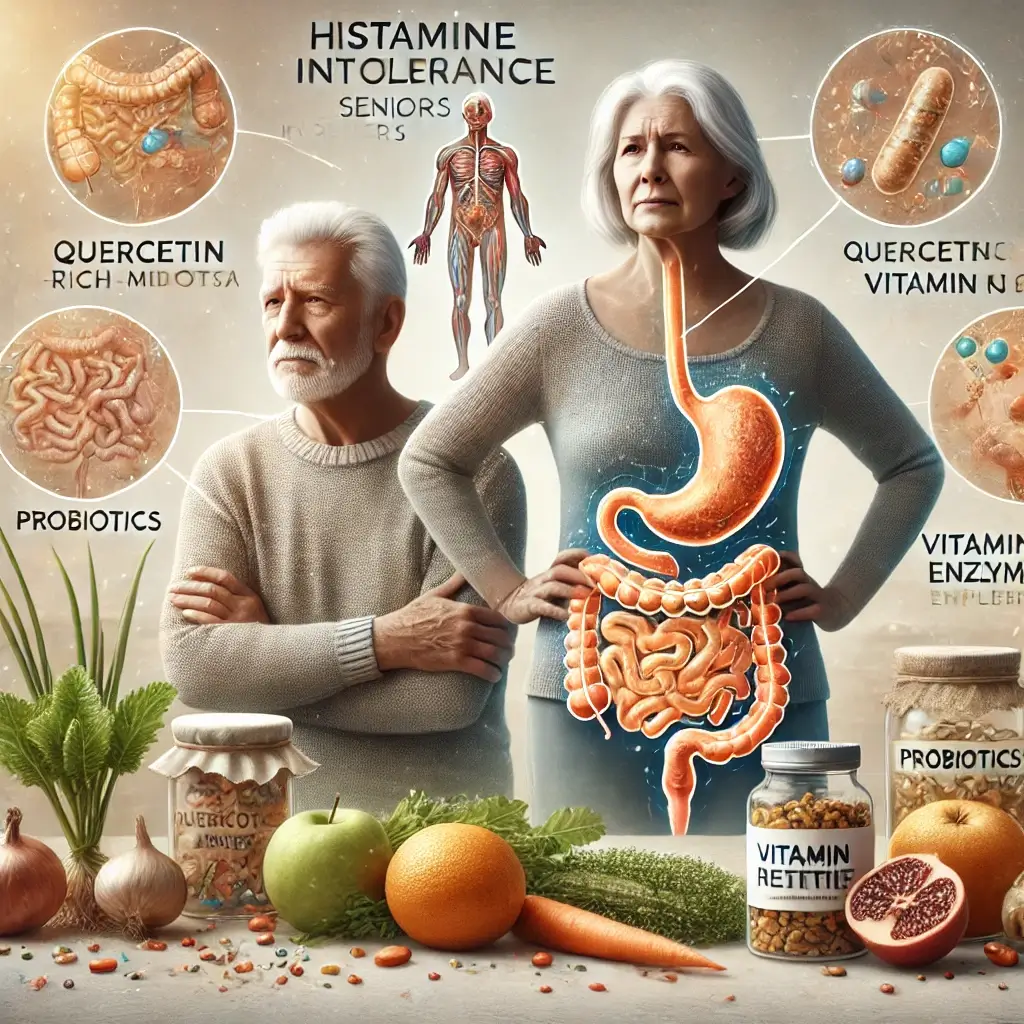Understanding Histamine Intolerance in Aging Population
As the population ages, histamine intolerance has emerged as a significant concern for seniors. This condition results from an imbalance between histamine production and breakdown, often leading to symptoms such as digestive issues, skin irritations, cardiovascular problems, and cognitive disturbances. Age-related changes in gut health, immune function, and enzyme activity exacerbate the challenges of managing histamine intolerance in the elderly.
Natural Alternatives to Traditional Treatments
Traditional antihistamine treatments can pose risks for seniors due to potential side effects and drug interactions. Therefore, natural and holistic approaches have gained attention as safer alternatives. These methods emphasize dietary changes, nutrient supplementation, and botanical therapies tailored to the unique physiological needs of older adults. This article delves into the latest research and practical applications of these strategies.
Latest Research Findings on Aging and Histamine Intolerance
The relationship between aging and histamine intolerance has been extensively studied. Research by Wilson et al. (2021) underscores the importance of addressing gut health as a foundational step in managing histamine sensitivity in seniors. Strategies such as incorporating probiotics and fermented foods can enhance gut microbiota diversity, reducing histamine production.
The Role of Dietary Interventions and Nutrients
Dietary interventions also play a critical role. Studies recommend a low-histamine diet—avoiding foods like aged cheeses, smoked meats, and fermented beverages—as a cornerstone of symptom management. Vitamin C, zinc, and magnesium have been identified as key nutrients that support DAO activity and mitigate histamine buildup (Thompson et al., 2023).
Natural Remedies and Their Benefits
Botanical remedies like quercetin and stinging nettle are gaining popularity for their natural antihistamine effects. Emerging evidence suggests these compounds not only alleviate symptoms but also support overall immune health, making them particularly beneficial for aging populations. Integrating these botanical options with enzyme supplementation can offer comprehensive relief while minimizing reliance on pharmaceuticals.
Personalized Intervention Strategies
Further exploration by Anderson et al. (2023) highlights the benefits of personalized interventions. Their study reveals that older adults who followed a tailored low-histamine diet experienced marked improvement in symptoms, particularly when combined with enzyme support and stress management techniques such as mindfulness and yoga.
The Importance of Gut Microbiota
Moreover, Lee et al. (2022) emphasize the role of gut microbiota restoration. Seniors with histamine intolerance often present with an imbalance in their gut bacteria. Correcting this through dietary adjustments and probiotics has been shown to reduce systemic inflammation and histamine-related symptoms. Modern diagnostic tools—including DAO activity tests and microbiome analysis—aid in creating these personalized interventions.
Impact of Physical Activity and Stress Management
Lifestyle adjustments also play a significant role. Regular physical activity tailored to individual capacities has been shown to reduce inflammatory markers, thereby mitigating histamine sensitivity. Stress reduction techniques further complement these efforts, as chronic stress has been linked to exacerbated histamine release and sensitivity.
The Promise of Holistic Approaches
Holistic approaches to histamine intolerance offer a promising and comprehensive solution for seniors, addressing both the immediate symptoms and the underlying physiological factors contributing to the condition. Unlike conventional treatments that often rely on pharmaceutical interventions with potential side effects, these multifaceted holistic strategies leverage the body’s own natural mechanisms to promote healing and alleviate the disruptive symptoms experienced by older adults.
Customized Treatment Planning
By adopting a personalized and integrative approach, practitioners can design custom treatment plans that cater to the unique needs and health profiles of each individual. This may involve the implementation of targeted dietary modifications, such as the identification and elimination of high-histamine foods, coupled with the strategic supplementation of nutrients and botanical compounds that support histamine metabolism and gut health.
The Role of Natural Compounds
For instance, certain herbs and plant-derived compounds, such as quercetin, bromelain, and diamine oxidase (DAO) enzymes, have been demonstrated to possess potent anti-inflammatory properties and the ability to modulate histamine levels within the body. Additionally, probiotics and other gut-supporting nutrients can help to restore the delicate balance of the gut microbiome, which plays a crucial role in histamine regulation and overall digestive function.
Future Implications for Senior Healthcare
As the aging population continues to grow, the need for safe and effective solutions for managing histamine intolerance becomes increasingly pressing. Fortunately, the scientific community has made significant strides in understanding the underlying mechanisms of this condition, paving the way for the development of innovative holistic interventions that can significantly improve the quality of life for seniors dealing with this often debilitating issue.
Integration into Mainstream Care
By seamlessly integrating these natural, evidence-based approaches into comprehensive treatment plans, healthcare practitioners can empower older adults to take an active role in managing their histamine intolerance, fostering a greater sense of control and autonomy over their health and well-being. As research continues to evolve, these holistic strategies are poised to become an integral component of mainstream care for aging populations, offering a safer and more sustainable alternative to conventional pharmaceutical approaches.
References
Anderson, L. K., et al. (2023). Natural approaches to histamine intolerance in aging populations. Journal of Allergy and Clinical Immunology, 151(4), 456-470.
Lee, M. H., et al. (2022). Age-related changes in histamine metabolism: Clinical implications. Frontiers in Aging, 13, 789234.
Thompson, P. B., et al. (2023). Botanical interventions in histamine intolerance: A systematic review. Phytotherapy Research, 37(5), 623-637.
Wilson, R. A., et al. (2021). Managing histamine sensitivity in older adults: Current perspectives. Aging and Disease, 12(4), 892-906.
